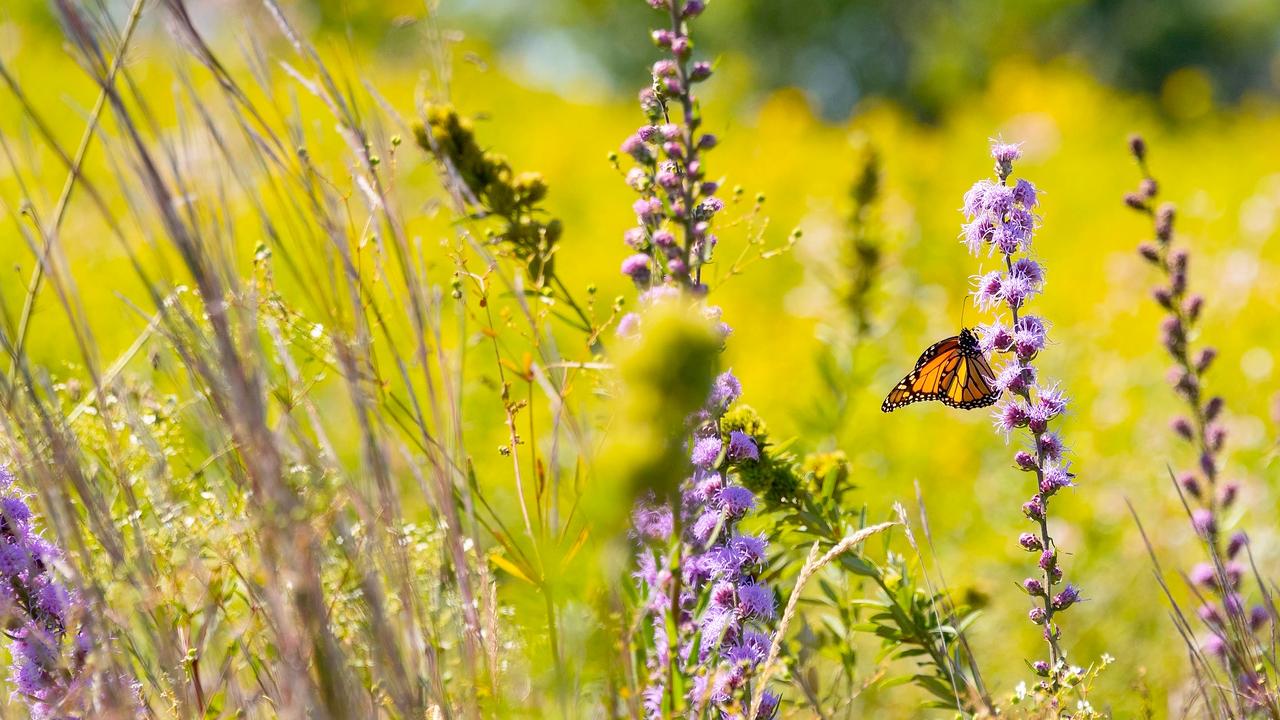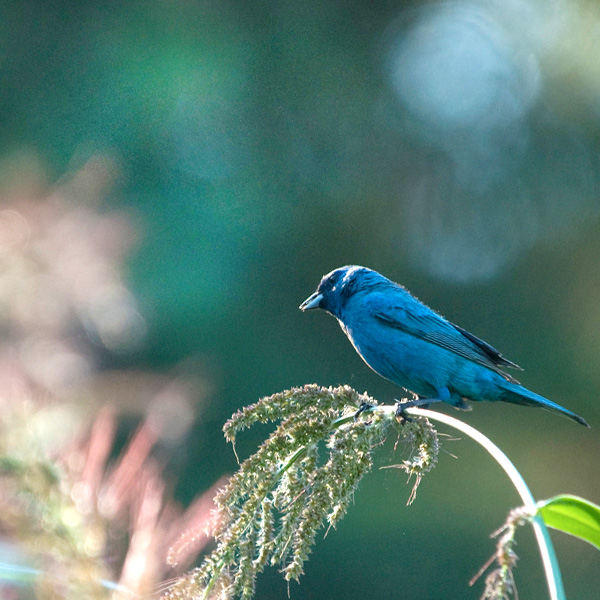

Conservation Topics
The Value of Native Plants
Stroll through the Garden’s 100-acre McDonald Woods this month and you'll be greeted by countless trees and shrubs unfurling their flower buds and leaves. Underneath them, small but spectacular wildflowers continue to bloom and bees (and the occasional hummingbird) are buzzing around collecting nectar and pollen.
Marsh marigolds, swamp buttercups, trillium, Dutchman’s breeches, anemones, shooting stars and many other delicate spring ephemerals flower before the trees fully leaf out. They take advantage of the sunlight that reaches the forest floor before the overhead canopy casts an umbrella of shade come May. These wildflowers were among the original flora that once blanketed thousands of woodland acres across northeastern Illinois.
Shooting Stars

Although they are extremely attractive, they are underused in many home gardens. We’d like to change that because native plants are truly unique. They have successfully grown and evolved over thousands of years, adapting to the soils, insects, fluctuating seasonal rainfall, freezing winters, and hot, humid, summers.
Plants that grew in this area before settlers arrived were the cornerstone in a sustainable web of life. They support native insects, birds, mammals and infinitesimally tiny soil organisms—all of which evolved with the plants. (One well-known example is the monarch butterfly, which only lays its eggs on milkweed (Asclepias) species. The caterpillars are among a handful of insects that can ingest chemicals from the plant, which makes them distasteful to predators. It’s a unique plant-insect relationship that developed over millennia.)
There’s a multitude of benefits when you add a few native plants to your garden. They can offer food, shelter, nesting material, and a place for insects and birds to lay their eggs. They tolerate the vagaries of an ever-changing climate. If urban, suburban and rural homeowners planted attractive natives on their property, their efforts would go a long way to supporting wildlife and providing enjoyment. After all, who doesn’t like watching birds and butterflies in the garden?
Native Plants and Birds

According to a recent study by the Cornell Lab of Ornithology, bird populations have declined by nearly three billion since 1970, a number that scientists have called staggering. The reasons for the decline are numerous, but habitat loss and the resulting lack of food plays a significant role. That’s because many birds feed insects (not seeds) to their young. Those insects have evolved to make use of native plants. However, native insects have not evolved to take advantage of non-native plants, such as Bradford pears or rhododendrons. A lack of insects—especially caterpillars—means little or no food for hatchlings. Adult birds must spend energy flying longer distances from the nest looking for suitable food.
As Doug Tallamy writes in his book, “Nature’s Best Hope,” (Timber Press, 2019), “To realize the ecological potential of our landscapes, most of us have to increase the abundance and diversity of our plantings.” That means adding to our plant palette at home with trees, shrubs, vines and perennials that once grew long ago where we now garden.
Sedum ternatum
A Shade-loving Sedum
There are many beautiful sedums that are pretty in the garden and attract some butterflies, but most are not native to the United States. However, there is a native woodland sedum, aka wild stonecrop—Sedum ternatum. It is the only sedum species native to central and northern Illinois. A miner bee visits the sedum flowers for nectar and pollen. These solitary bees have lives that evolved to correspond with the bloom time of specific wildflowers, such as wild stonecrop. While most ornamental sedums grow in full sun, this one is normally found in or near woodlands. It makes a perfect addition to the shade garden where it provides spring blooms, attractive foliage and supports native wildlife.

Good Reads
“Native Plants of the Midwest: A Comprehensive Guide to the Best 500 Species for the Garden” by Alan Branhagen (Timber Press)
“Attracting Native Pollinators: Protecting North America’s Bees and Butterflies,” The Xerces Society Guide (Storey Books)
Nina Koziol is a garden writer and horticulturist who lives and gardens in Palos Park, Illinois.

